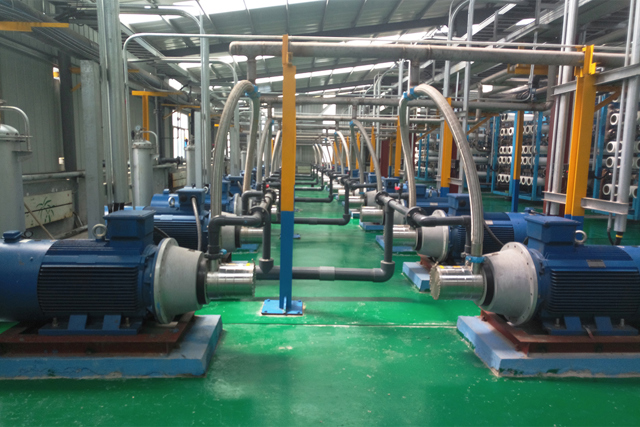The key to making ZLD systems more energy-efficient is reducing the quantities of brine that need to undergo concentration and crystallization, both of which require substantial amounts of energy: 13-26 kWh/m³ and 32-65 kWh/m³, respectively.
To achieve this reduction, engineers proposed a two-stage RO plant that would effectively pre-concentrate the wastewater and reduce the ZLD system's overall energy consumption and costs.
The first stage consists of seven parallel trains (six in operation, one for backup), each of which uses three APP 78 pumps to provide design pressure of 50 bars. This first stage has the capacity to match the factory's daily wastewater output, 30,000 m³/day, and provides the first step of brine concentration with a recovery rate of 60%.
The second stage further concentrates the remaining brine of 12,000 m³/day with seven parallel trains (six in operation, one for backup), each using four APP W 24 pumps to provide design pressure of 120 bars.
According to Obama Sun, general manager at Beijing C.I.I.T, there were three good reasons to choose Danfoss APP pumps for the project.
"The first and most important reason is energy efficiency, the biggest single OPEX category," he says, "Energy costs are the main driver for ZLD in general, and for the pressure needed in RO filtration specifically. The second reason is easy maintenance: since the end-user built and operates the RO system, long maintenance intervals, no lubrication, and onsite maintenance were all important. But third and not least was delivery time. Because of the tight deadline, we had only four months to design, source components, build and install.
We had to move fast, so Danfoss' short lead time for these standard pumps was critical."

